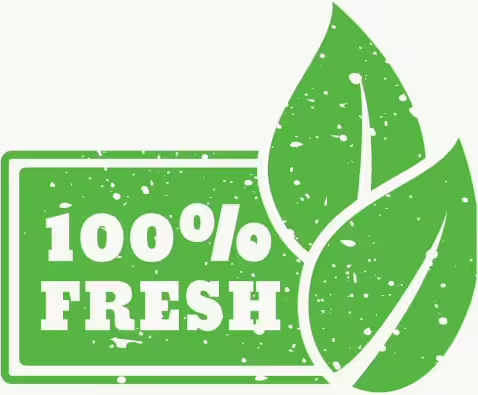Outdoor storage sheds are an essential addition to any backyard, providing a convenient place to store tools, equipment, and other outdoor items. Selecting the right outdoor storage shed can be challenging, given the variety of options available.
This guide will help you understand how to find the best outdoor storage sheds by focusing on key factors such as size, material, style, and additional features.
Determining the Right Size
Assess Your Storage Needs
Before choosing a shed, evaluate your storage needs. Consider the items you plan to store and how much space they will require.
- Small Sheds (up to 80 square feet): Ideal for storing garden tools, small lawn equipment, and outdoor accessories. These sheds are perfect for smaller yards.
- Medium Sheds (80 to 160 square feet): Suitable for storing larger equipment like lawn mowers, bicycles, and patio furniture. Medium sheds provide ample space for most homeowners.
- Large Sheds (over 160 square feet): Best for storing multiple large items or for use as a workshop. These sheds are ideal for large properties with extensive storage needs.
Measure Your Available Space
Measure the available space in your yard to ensure the shed will fit comfortably. Consider factors such as:
- Placement: Choose a flat, level area that is easily accessible.
- Clearance: Ensure there is enough space around the shed for maintenance and access.
- Zoning and Permits: Check local zoning regulations and permit requirements for shed installation.
Choosing the Right Material
Wood Sheds
Wood sheds are a popular choice due to their classic appearance and durability.
- Advantages: Aesthetic appeal, customizable, sturdy, and long-lasting.
- Disadvantages: Requires regular maintenance (painting, staining, sealing) to prevent rot and insect damage.
Metal Sheds
Metal sheds are known for their strength and low maintenance requirements.
- Advantages: Durable, resistant to pests and fire, minimal maintenance.
- Disadvantages: Prone to rust if not properly treated, can be noisy during rain, and may have limited aesthetic appeal.
Resin/Plastic Sheds
Resin or plastic sheds are becoming increasingly popular due to their durability and ease of maintenance.
- Advantages: Weather-resistant, rust-proof, low maintenance, lightweight, and easy to assemble.
- Disadvantages: Less customizable, can be less sturdy than wood or metal.
Considering Style and Design
Roof Styles
The roof style of your shed can impact its appearance and functionality.
- Gable Roof: A traditional, triangular roof design that offers good water runoff and headroom.
- Flat Roof: A simple, modern design that works well for smaller sheds and limited space.
- Barn Roof: Provides extra storage space in the loft area and has a rustic look.
- Lean-To Roof: Slopes in one direction, making it ideal for placing against a wall or fence.
Door and Window Options
The doors and windows of your shed affect accessibility and light.
- Single vs. Double Doors: Double doors provide easier access for larger items, while single doors are sufficient for smaller sheds.
- Sliding vs. Hinged Doors: Sliding doors save space and are ideal for tight areas, while hinged doors offer a more traditional look.
- Windows: Windows allow natural light to enter the shed, making it easier to find items and work inside. Consider skylights or translucent panels for additional light.
Evaluating Additional Features
Flooring Options
The type of flooring in your shed can impact its durability and functionality.
- Built-In Floor: Many resin and some metal sheds come with built-in floors, providing a solid base and protecting items from ground moisture.
- Concrete or Paver Base: A concrete slab or paver base offers a sturdy foundation for any shed type, preventing shifting and moisture issues.
- Pressure-Treated Wood Floor: Ideal for wooden sheds, providing a durable and rot-resistant base.
Ventilation
Proper ventilation helps prevent moisture buildup and protects stored items.
- Vents: Look for sheds with built-in vents to allow air circulation.
- Windows: Opening windows can provide additional ventilation.
Shelving and Organization
Maximize your shed’s storage capacity with built-in or customizable shelving and organization systems.
- Shelving Units: Adjustable shelves help organize tools and equipment.
- Hooks and Pegboards: Ideal for hanging tools and keeping items within easy reach.
- Loft Space: Utilize loft space in sheds with higher roofs for additional storage.
Considering Cost and Quality
Budget
Determine your budget before shopping for a shed. Prices can vary widely based on size, material, and features.
- Small Budget: Look for basic resin or metal sheds that offer essential storage at an affordable price.
- Moderate Budget: Consider medium-sized wood or high-quality resin sheds with additional features.
- High Budget: Invest in large, customizable wood sheds or premium resin sheds with extensive features and durability.
Quality
Investing in a high-quality shed ensures it will last for years and protect your stored items.
- Warranty: Check for a manufacturer’s warranty as an indication of quality and reliability.
- Customer Reviews: Read customer reviews to gauge the performance and durability of the shed.
Finding the best outdoor storage shed involves assessing your storage needs, choosing the right material, considering style and design, evaluating additional features, and balancing cost and quality.
By carefully considering these factors, you can select a shed that not only meets your functional requirements but also enhances the aesthetic appeal of your backyard. Investing in a high-quality shed will provide you with a durable and reliable storage solution for years to come, ensuring your outdoor space remains organized and clutter-free.
